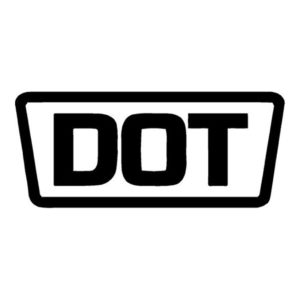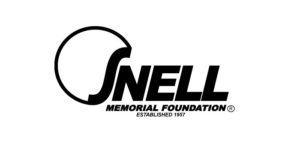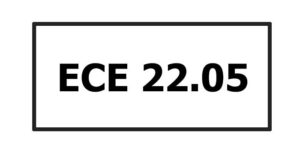Contents
Rating and Testing Of Helmets
It is a fact that every brand has a different way of making a helmet. Even the best ones in the market are not made in the same way. Another obvious thing is that not all helmets provide substantial protection to your skull and face. That is the main reason why it is crucial for you to know if your safety gear is trustworthy or not.
Because every rider must know what these helmets are from the inside and the outside, we have written this article after comprehensive research. And, more than that, we want the riders to learn why these helmet safety ratings can affect your life. This will help you become more prepared and equipped in picking the right gear for yourself.
Significance of Motorcycle Helmets
In every era, helmets have been an essential item for every motorcycle rider. Today, our traffic rules make the biker follow the rules. Also, there is strict punishment for those who don’t take these rules seriously. Plus, if you are a professional rider, then you must know that there is no need for you to take offense to this. At the end of the day, it is for the rider’s benefit.
Furthermore, when we are told to make a list of safety items that a rider must own, a helmet secures the first position on the list. That shows the importance of this equipment in our lives. Sadly, every year, thousands of road accidents take place because the victims don’t have properly constructed helmets.
According to the concerned authorities of the USA, in 2016, more than five thousand bikers lost their lives to a road accident.
There is no use in having a poorly made motorcycle helmet. It can turn your trip into a nightmare. This happens quite often when a person gets injured in any part of the body and survives. Even a little concussion in your head is not a thing to be taken for granted. That is because it may cause incurable brain damage. All of this can happen if you experience an impact on your head without protection.
Unfortunately, among those who don’t use a helmet, forty percent of people do it intentionally. Most importantly, many agencies report that almost two thousand motorcycle riders survived deadly crashes because they had helmets on.
On that account, many agencies like NHTSA request you to wear a helmet as it decreases the risk of head injuries by 70%. That means you have a high chance of survival if you suffer from a collision while riding your motorcycle.
That being said, there is no point in arguing if helmets are significant for every rider or not. Their functionality is what makes so many people write about them on different platforms.
Aside from that, they are great for styling. You can easily find a carbon fiber helmet with a mesmerizing look. In addition to that, they ensure our maximum safety when we traverse the roads with our hogs.
What Are Motorcycle Helmet Safety Ratings?
Basically, the Department of Transportation (DOT) of the United States realized that they need to optimize the safety of riders to another level. So, they came up with a safety guideline that would tell people if a specific helmet is qualified enough to be in the market as a protector.
We have already told you guys that all helmets can’t provide a safe level of protection to you. Besides that, it is not possible for you to find out the details of these helmets entirely. But, what we can do is that we can check some of the imperative factors to see if the helmet has good quality construction.
Are DOT Certifications Reliable?
First of all, let’s talk about the common misconception that people have about DOT. People think that before a helmet is released in the market, it needs approval by DOT. In reality, manufacturers don’t have to submit their helmets to DOT for inspection and testing to be launched in the market. The Department of Transportation is not a body that inspects the helmets that companies produce.
Yet, the DOT has a vital role in this industry. It has the authority to ask manufacturers any questions about their helmets and other motorcycle accessories. This government body has set some stringent guidelines that a company must apply to their product to see if it can meet the standards for a danger-free motorcycle ride.
Plus, the manufacturers are told to keep testing their product till it satisfies all the standards. The parts of a helmet that need testing include the vision of the road, impact negation, resistance to penetration, etc.
Field vision is the factor that needs adequate testing. There are several tests that a company can conduct to make sure that the gear is equipped with all of these characteristics.
Coming to the next point, DOT issues these standards under the name of Federal Standard FMVSS 218. How can you know that your helmet is certified by DOT? If a helmet has met this qualification, you will find a DOT sticker on any of its parts.
Brief Comparison on Helmet Safety Ratings: Dot Vs. Snell Vs. ECE
DOT

You will be shocked that the DOT FMVSS 218 is the simplest safety rating for a motorcycle helmet. However, the standards mandated by DOT are suitable to keep you safe. Most of the manufacturers pass their tests without any difficulty. That is something that bothers us slightly. Not only that, DOT involves random sampling when a helmet is tested. Thus, it becomes somewhat difficult to spot the poor helmets.
Random testing is not right for the integrity of these tests. It makes people ask questions about the durability of the helmets even if they pass these tests. By that, we are not saying that you can’t trust DOT. The standards of DOT have the qualities to protect your head during accidents. Additionally, when you have the option to pick between a helmet with a DOT rating and a helmet without it, you must go with the latter.
Due to a number of drop tests being a part of the DOT safety standards for helmets, they make your head safe. To pass the DOT standards, a helmet is required to go through a series of penetration tests as well, which is ideal for assessing their structural integrity.
We understand that this must have created doubts in the minds of many motorcyclists; the DOT is known for its rigid testing. The retention system, penetration resistance, and field vision it has separate guidelines. It also directs the makers on the method of pasting the labels on their helmets.
Regardless of that, with the DOT FMVSS requirements regarding the impact test, they are extra careful. It can be the reason why there are a bunch of helmets available for purchase that seem tough and rigid, yet they don’t have a DOT sticker on them.
After all of this information, we have a warning for you. After our research, we found out one shortcoming of the DOT FMVSS 218. Out of all the helmet safety ratings, the DOT FMVSS 218 is allowed to be supervised by a third-party agency. In simple words, there are independent testing organizations that a safety gear company can hire. These testing companies investigate if the designs of the helmets have faults.
Put yourself in the shoes of such companies; why would you give them negative feedback if they are paying you a good amount of money for the job. It would be pretty normal for you to give passing results to their products to get in their good books.
Luckily, we were not able to find any controversy that ratifies our worries about the testing authenticity of DOT FMVSS 218. To help you make a judgment, a quick overview of this helmet rating is written below:
Benefits
- They utilize high-energy testing strategies
- They use hemispherical anvils for impact test
- Testers can hit every region of the helmet to check the rigidity
- It guarantees a fair maximum energy transfer of about 400 g
Drawbacks
- The head forms used in the test are limited
- Do not have tests for energy management features like optics, etc
ECE 
The ECE 22.05 is the second most important helmet safety rating. As compared to the DOT, the ECE 22.05 is kind of new when it comes to implementation. Nevertheless, it ensures more detailed and tough testing mechanisms for every helmet out there.
If you are a rider who lives in the United States, there’s a high probability that you may not be familiar with the ECE 22.05. As it was made in Europe, many Americans have not heard of this helmet rating.
The full form of ECE is Economic Commission for Europe. In Europe, more than fifty countries apply this multi-national standard rating to the manufacture of helmets. So, when you find a helmet that has an ECE 22.05 sticker on it, consider it safe to use. Of course, it will save your life in fatal situations.
Generally, the ECE test is comprehensive. For checking the overall quality of the safety features that consist of a helmet, it is perfect.
Furthermore, this rating indicates if the combination of a specific element or a design can increase the chances of survival during road collisions and crashes. It ranks the quality of optics incorporated in the face shields. Other than that, it assesses the non-impact factors like the durability of the material from which the shell is made.
Unlike the DOT, ECE requires people to cross-test their helmets. To put it simply, before granting the ECE certification, the helmets must be inspected by several accredited third parties.
This process mitigates the qualms of riders that the helmet that they purchased compromises their safety. There is one thing to know about this rating is that the average crash speeds of motorcycles in Europe are comparatively lower than in the United States. This factor alone is enough to affect the overall scheme of the impact testing conducted under the ECE 22.05 standard.
We know that Hemi anvil is used in DOT, and they deliver a tremendous amount of energy on a helmet. For the ECE test, a curbstone is utilized. Even though technicians describe it as a smooth anvil, the energy it delivers is much lower.
In the impact testing of ECE, a single blow is used instead of many conventional blows. On that note, you can presume that the ECE testing scheme has lower energy grades compared to the other two ratings for helmets.
Keep in mind that in an ECE test, the technician can hit only a few points that are mentioned by ECE. So, the whole surface of the helmet is not hit by the testers. Comparatively, the DOT and SNELL allow the testers to hit the helmet anywhere.
Benefits
- Includes detailed testing on each helmet in Europe
- Permits a low peak of energy that is a maximum of 275 g
- Features a series of tests for numerous safety features that must be present in a helmet
- For a wide range of safety inspection and testing, eight head forms are used
Drawbacks
- It uses curbstone anvil and single-strike rule for assessment. This method results in a significantly low-energy testing mechanism. Similarly, this rating can be low for zones that are vulnerable at higher speeds on the roads.
- The tester can only strike the fixed areas. Hence, it becomes easy to pass this test.
- The head form variation included in the test causes displacement in the center of gravity during tests reducing the energy impact.
SNELL

When we talk about helmet safety ratings, SNELL M2015 is known to be the best. Due to this, the whole world of safety gear has respect for the SNELL Memorial Foundation. The golden standards that are set by SNELL are truly praiseworthy. That is why when we discuss measuring the quality of helmet safety, we don’t forget to mention SNELL.
Note that SNELL M2015 is not a regular testing scheme. It uses the dangerous edge anvil in a phase of the assessment. Amongst all the anvils that the technicians utilize for impact testing, it is the most aggressive.
After two conventional blows, it requires 275 g maximum energy transfer. This amount of energy transfer is similar to the previous rating. Basically, this factor indicates measures the performance of a helmet during strong impacts.
SNELL ratings were made to ensure that the riders are safeguarded on a racetrack. These helmet ratings are custom-made. The also tests the ease of removal and stability of the helmet. In the ECE and DOT guidelines, these qualifications are absent.
The major difference that we can quote about SNELL testing and other testing standards is that the testers have complete freedom to inspect the helmet. When the technicians have control over the test, the inspection is done to the fullest.
The technicians are allowed to hit different parts of the helmet until they are satisfied with the energy management feature. They have the authority to dissect the helmet, which makes it possible for them to examine the internal components of the helmet, such as the EPS liner or the incorporated Bluetooth Communication system.
This autopsy of the helmet provides the SNELL technicians a chance to detect the weak points or the downside in the design of a helmet. However, previously, SNELL has faced trouble as it gave preference to EPS liners that are tough and stiff. Because of that, SNELL M2015 made headlines. In actuality, during low energy impacts, the hardness of the liners promotes the force to transfer in a substantial amount.
In order to fix such problems in the scheme, multiple configurations were made in this motorcycle helmet safety rating.
Benefits
- Ample tests to check the quality of the helmets
- 275 g peak of energy is permitted
- Ensures the stability, ease of removal, and face shield hardness of the helmet
- Utilizes edge anvils for impact testing
- Technicians can take full charge of the tests
Drawbacks
- It needs a lot of money and time for testing the helmets
Conclusion
Lastly, when we talk about the helmet safety ratings, you must not blindly believe in the helmet that your fellow rider thinks is great. Your safety is not something that can be taken lightly. So, don’t ever rely on superficial ratings that are concluded by customer reviews.
From the comparison drawn on Helmet Safety Ratings by us, it is evident that each of the rating systems has some pros and cons. Nonetheless, these helmet ratings don’t depend on shaky assessment schemes. All of these ratings ensure the well-being of the rider.







